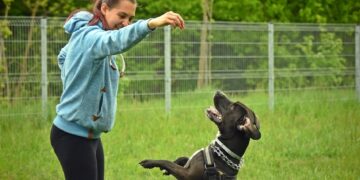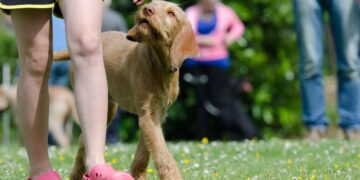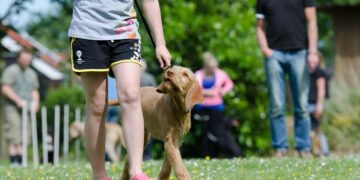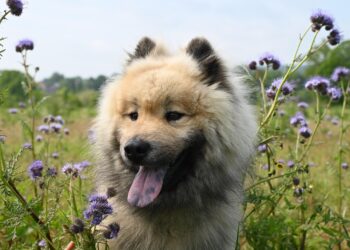Essential Dog Training Tips for Beginners: Start Your Pup Right
Welcome to the rewarding world of dog ownership! Whether you’ve just brought a bouncy puppy into your home or adopted a loyal companion from a shelter, training your new friend is crucial for a harmonious relationship. Dog training might seem daunting at first, but with the right approach, it can be a fun and enriching experience for both of you. In this guide, we’ll explore essential tips to ensure you start off on the right paw!
Understanding Your Dog’s Needs and Behaviors
Every dog is unique with its own personality and needs. Successful training starts with understanding these individual traits. Dogs are pack animals by nature, and they look for leadership and structure from their pack leader—you. Establishing yourself as the leader with firm, gentle guidance creates a sense of security for your pet, making training more effective.
Learning How Dogs Communicate
Dogs communicate primarily through body language. Observing your dog’s posture, tail movements, and eye contact can give you insight into their emotional state. A relaxed body, wagging tail, and gentle eyes usually indicate a happy dog, while a tucked tail, flat ears, and avoidance of eye contact might signal fear or anxiety.
Consistency is Key
Consistency in commands, tone of voice, and body language helps your dog understand your expectations. Use simple, one-word commands like “sit”, “stay”, and “come”. Every member of your household should use the same commands to avoid confusing the dog.
Setting the Stage for Successful Training
Effective training is based on positivity and patience. Dogs respond well to positive reinforcement. This method involves rewarding behaviors you want to encourage, which makes learning a pleasant experience for your dog and strengthens your bond.
Choose the Right Rewards
Identify what motivates your dog the most. While treats are a common incentive, some dogs might prefer toys, praise, or physical affection. Keep rewards varied and exciting to keep your dog engaged in the training sessions.
Create a Distraction-Free Environment
Begin training sessions in a quiet environment with minimal distractions. As your dog grows more comfortable and adept at following commands, gradually introduce new distractions to help them learn to focus in any situation.
Basic Commands Every Dog Should Know
Teaching these essential commands will not only make daily life with your dog more manageable but also enhance your dog’s safety.
1. Sit
The “sit” command is one of the easiest and most useful commands. Hold a treat close to your dog’s nose, then move your hand up, allowing their head to follow the treat and causing their bottom to lower. Once they’re in a sitting position, say “Sit,” give them the treat, and share affection.
2. Come
This command can prevent dangerous situations by keeping your dog out of harm’s way. Start this training on a leash. Gently tug on the leash while saying “Come.” When your dog comes to you, reward them with a treat and affection.
3. Stay
Ask your dog to “Sit.” Then open the palm of your hand in front of them, say “Stay,” and take a few steps back. Reward them if they stay put, even for a few seconds. Gradually increase the duration and distance over time.
Dealing with Common Behavioral Issues
Behavioral issues can often be managed with regular, consistent training sessions. Common issues include barking, chewing, and jumping up on people.
1. Barking
Understanding why dogs bark is crucial in addressing this behavior. If your dog barks for attention, teach them that they only get what they want when they’re quiet. Consistently ignore the barking and reward quiet behavior with treats and attention.
2. Chewing
Chewing is a natural dog behavior but can be destructive. Provide appropriate chew toys and praise your dog when they chew these instead of your belongings. Keep personal items out of reach to avoid temptation.
3. Jumping Up
Dogs often jump up when excited. Turn your back and ignore your dog when they jump. Teach them to sit as an alternative behavior to gain your attention and reward them when they do.
Regular Follow-Ups and Adaptability
Training is an ongoing process. Continually challenge your dog with new commands and environments to enhance their learning. Monitor your training sessions and be flexible; if a certain method isn’t working, be prepared to try another approach. Consulting a professional dog trainer for more complex issues or joining a local dog training club can also be beneficial.
Final Thoughts
Remember, the goal of training is to build a strong, positive relationship with your dog. Be patient, remain consistent, and keep training sessions short and fun. With these tips and techniques, you’re well on your way to having a well-trained, happy canine companion. Enjoy the journey – after all, training should be as enjoyable for you as it is for your dog!














































